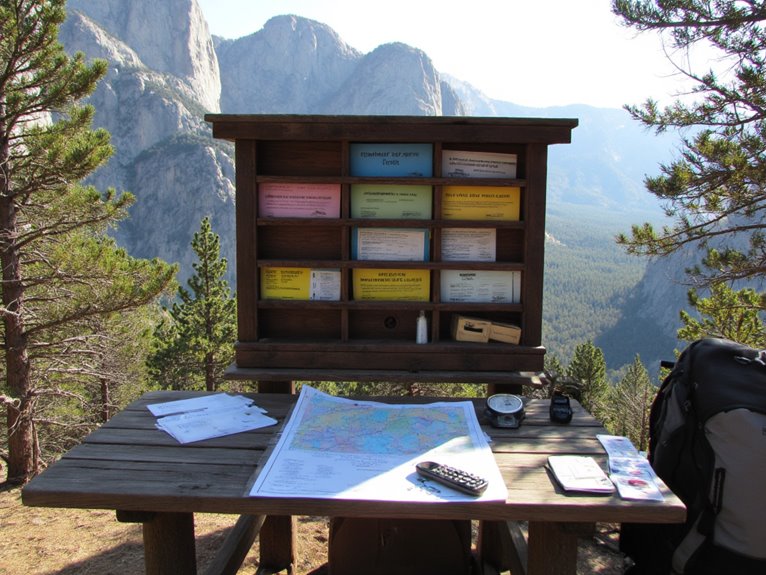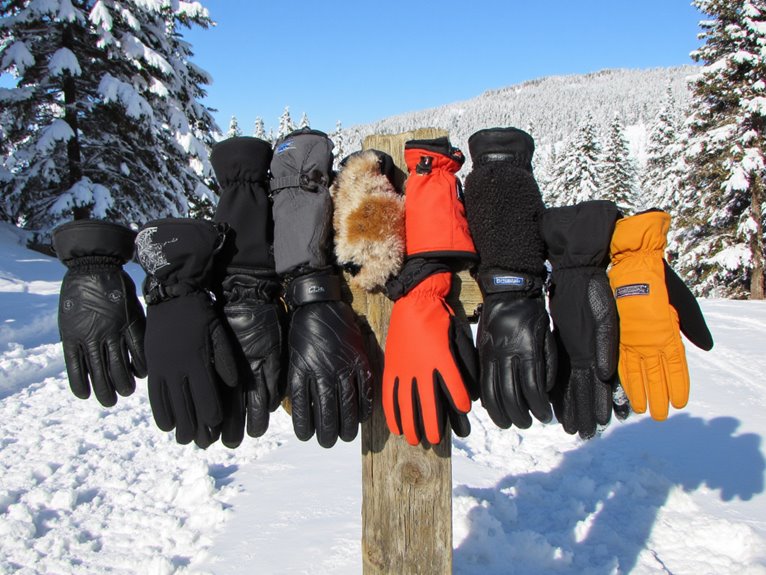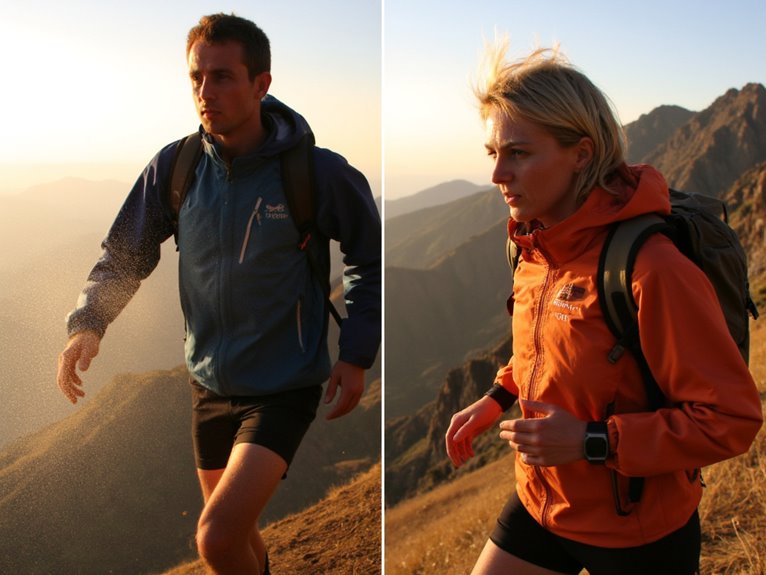Permit Planning for Popular Backpacking Destinations
You’ll need to master complex application windows that open months before your trip, with each park operating different systems. Grand Canyon requires lottery entries four months ahead, while Rocky Mountain opens March 1st and Great Smoky Mountains only allows 30-day advance bookings. Peak season demand from late spring to early fall creates competitive lotteries, so you’ll want backup destinations and permit-free alternatives like Oregon Coast Trail segments ready. Understanding these timing strategies and logistics will maximize your success rates.
We are supported by our audience. When you purchase through links on our site, we may earn an affiliate commission, at no extra cost for you. Learn more. Last update on 7th January 2026 / Images from Amazon Product Advertising API.
Notable Insights
- Apply 4-6 months in advance as most popular destinations require permits obtained through competitive lottery systems.
- Know specific reservation windows: Rocky Mountain opens March 1, Grand Teton January 10, Olympic April 15.
- Expect permit fees ranging $10-50 per person/group with detailed itinerary documentation including entry points required.
- Develop backup plans with alternative destinations, monitor cancellations, and consider less popular trails within parks.
- Target off-peak seasons and consider permit-free alternatives like Oregon Coast Trail or Superior Hiking Trail.
Understanding Permit Requirements and Systems
While most day hikes in popular destinations don’t require advance planning, backcountry camping permits represent a complex system you’ll need to master before hitting the trail.
Different permit types apply to various activities and locations. Day hiking typically requires no permits in parks like Zion and Yosemite unless you’re entering backcountry zones. Overnight camping demands permits year-round, with seasonal restrictions affecting areas like Mt. Whitney zone from May through November.
Parks employ diverse management strategies for permit distribution. Yosemite and Rocky Mountain use sophisticated online reservation systems, while many locations allocate half their permits first-come-first-serve at ranger stations. Grand Canyon requires permits to be obtained 4 months in advance through their monthly lottery system.
Lottery systems handle high-demand permits through Recreation.gov. Some parks like Grand Canyon still require fax, mail, or in-person requests rather than online applications. When land belongs to multiple authorities, such as Lost Coast and King Range National Conservation Area, permit complexities increase significantly.
Application Deadlines and Timeline Planning
Successful permit acquisition depends on your ability to navigate complex application windows that open months before your planned trip dates.
You’ll need to mark specific dates like March 1 for Rocky Mountain National Park’s May-October permits and February 1-March 1 for Mt. Whitney’s lottery system, as these windows close quickly and won’t reopen.
Creating multiple backup options becomes essential since popular destinations like the Enchantments and Half Dome use competitive lottery systems with low success rates, requiring you to simultaneously pursue permits for alternative locations and dates. Grand Teton National Park requires you to secure summer reservations between January 10 and May 15, after which only first-come, first-served permits remain available. Consider signing up for email notifications to receive updates when permit calendars are refreshed annually for destinations like Boundary Waters, Brooks Camp, and Denali.
Peak Season Lottery Timing
When should you start planning for permits at premier backpacking destinations? Peak trends show demand spikes during late spring through early fall when weather conditions optimize trail access. Most lottery systems open four to six months before peak season, requiring advance preparation.
Understanding lottery strategies becomes essential since popular destinations see extremely low success rates. All entries within the application window receive equal treatment regardless of submission timing. This system prevents gaming while ensuring fair access.
| Destination | Application Window | Notification Date |
|---|---|---|
| Yosemite North Pines | Nov 25 – Dec 14 | Dec 22 |
| Mount Whitney | Opens Feb 1 | Varies |
| The Wave | 4 months prior | Rolling basis |
| Enchantments | Opens Feb 15 | Varies |
Mark these important dates immediately. Missing application windows means waiting another full year for access to premier destinations. Some backpacking destinations like Angels Landing in Zion require specialized permits due to overcrowding, with lottery entries accepted during quarterly periods including January, April, July, and October. These managed access systems help reduce environmental impact while maintaining sustainable visitor numbers across fragile wilderness areas.
Advanced Reservation Windows
Most premier backpacking destinations operate on staggered reservation windows that open months before your intended trip dates, requiring precise calendar management to secure permits.
Grand Canyon operates the most extended timeline, opening lottery applications six months prior to your trip month-January 16th for June trips, February 16th for July adventures.
Yellowstone’s early access lottery runs March 1-20 for peak season trips from May 15 through October 31.
Olympic’s summer reservations open April 15, while North Cascades permits become available May 1st at 7:00 AM PT.
Your advanced reservation strategies must account for these varying timelines.
Great Smoky Mountains offers the shortest window at 30 days prior.
Seasonal peak considerations demand you prioritize high-demand destinations first when planning multi-park itineraries across summer months. Mount Rainier requires permit activation in person at the visitor center within 24 hours before your trip begins.
These permits enable visitor impact management across fragile ecosystems and high-traffic wilderness areas.
Creating Backup Plans
Even the most methodical reservation timing won’t guarantee permit approval, making backup strategies your second line of defense against denied applications. Effective permit strategies require developing alternative destination options with different application deadlines and availability windows.
You’ll need to understand multiple timeline systems simultaneously since second-choice permits often operate under separate scheduling frameworks.
Monitor walk-up permit opportunities and last-minute cancellations through official park websites. These permit contingencies typically open 15-30 days before trip dates but remain highly competitive. Some parks release additional permits the previous evening at 7pm which can provide last-minute opportunities for determined backpackers.
Consider nearby trailheads or alternative routes within the same region as viable substitutes. Less popular destinations frequently maintain open availability when premier locations reach capacity.
Track permit system updates regularly and maintain flexible travel dates to capitalize on unexpected openings that emerge from cancellations or administrative releases. Remember that many parks have varying reservation windows, with some offering permits 90 days in advance while others operate on much shorter timeframes.
Quota Systems and Competitive Lotteries
The backbone of permit management in heavily trafficked wilderness areas relies on quota systems that translate environmental carrying capacity into enforceable daily limits at trailheads.
Quota systems convert scientific carrying capacity data into practical daily visitor limits that protect wilderness areas from overuse.
These quotas emerge from detailed campsite inventories that quantify acceptable impact levels and visitor dispersal patterns. You’ll encounter competitive lotteries when demand exceeds available permits, like Yosemite’s Half Dome offering 225 daily permits through preseason and daily drawings.
Effective quota management splits permits between advance releases (typically 60% six months ahead) and last-minute availability (40% two weeks prior).
Applications undergo random selection during predefined windows, with successful applicants receiving assigned time slots to claim permits. This approach guarantees lottery fairness while reducing server congestion.
Digital platforms like Recreation.gov facilitate the entire workflow, from application submission to permit distribution across seasonal quota periods.
Alternative Options and Permit-Free Destinations
When permit quotas block access to your preferred destinations, numerous wilderness areas across North America offer world-class backpacking without reservation requirements or competitive lotteries.
Alternative backpacking options include Minnesota’s 300-mile Superior Hiking Trail, featuring Lake Superior views and moose habitat. Colorado’s Blue Lakes in Mt Sneffels Wilderness and Missouri Lakes Loop in Holy Cross Wilderness provide permit free trails with established campsites.
Nevada’s 36-mile Ruby Crest Trail traverses high desert to alpine terrain over four days with minimal crowds. Sierra Nevada’s Hoover Wilderness and Granite Chief Wilderness offer dramatic peaks without standard permit requirements.
These destinations require self-issuing permits at trailheads for visitor tracking but impose no fees or quotas, providing accessible wilderness experiences. When planning multi-day trips to these permit-free areas, consider investing in ultralight tents that weigh under 4 pounds to reduce pack weight on longer trail segments.
Fees, Logistics, and Documentation

Securing backpacking permits involves three critical cost and administrative components that directly impact your trip planning timeline and budget.
Permit fee structures typically range from $10 to $50 per person or group, with popular destinations like Grand Canyon maintaining strict pricing to manage environmental impact. Seasonal price fluctuations don’t greatly affect base fees, but demand varies dramatically during spring and fall shoulder seasons.
You’ll need detailed itinerary documentation including entry points, campsites, group size, and trip duration.
Payment methods include online credit cards, mail-in checks, or ranger station cash transactions.
Application processes vary by park-Yosemite opens six weeks prior, while Grand Teton accepts applications starting January’s first Thursday.
Half of permits are typically reserved for advance booking, with remaining permits distributed first-come-first-served.
Strategic Planning and Backup Approaches
Because permit demand vastly exceeds availability at premier backpacking destinations, you’ll need strategic timing and multiple backup plans to secure wilderness access.
Effective permit strategies begin with understanding each park’s unique reservation windows. Grand Teton opens applications earliest-first Thursday in January-while Yosemite operates six weeks ahead and Rocky Mountain uses fixed March 15 dates.
Success depends on knowing when each park opens its reservation system-timing varies dramatically from January launches to six-week windows.
When primary permits fail, implement hiking flexibility through alternative approaches. Select less popular trails within the same park, like northern Yosemite sections or lesser-known Glacier routes.
Consider permit-free options such as Oregon Coast Trail segments. Day hikes replace overnight trips when backcountry camping isn’t available.
Target off-peak seasons and shoulder months for reduced competition. Monitor cancellation alerts and prepare for last-minute first-come-first-serve opportunities at ranger stations.
Frequently Asked Questions
Can I Transfer My Permit to Someone Else if I Can’t Go?
You can’t transfer your permit to someone else under standard permit transfer policies.
These permits are non-transferable and tied specifically to you or pre-designated alternates listed during booking. You can’t add new people or change permit holders after purchase.
Your backup permit options include designating up to three alternate leaders at reservation time, or cancelling within the allowed timeframe to release quota space for others.
What Happens if Weather Forces Me to Change My Planned Route?
When weather forces you to deviate from your planned route, you’ll need immediate route alternatives that prioritize safety over permit compliance.
Take essential weather precautions: seek natural shelter, avoid exposed ridgelines, and use GPS to identify safe exit paths. Move to higher ground during heavy rain to prevent flood exposure.
Most permit systems allow route modifications for safety reasons, but you should document weather conditions and notify rangers when possible about necessary deviations.
Do Children Count Toward Group Size Limits for Permit Applications?
Yes, children count toward group size limits regardless of child age.
National parks enforce maximum party sizes ranging from 4-15 people, including infants and toddlers.
You’ll need to include all children in your permit application since group size restrictions are based on total campers occupying sites overnight.
When your party exceeds standard limits, you must apply for group permits or designated group campsites with stricter regulations.
Can I Extend My Permit if I Want to Stay Longer?
You can’t extend your permit at most popular backpacking destinations.
Permit extension policies strictly prohibit purchasing additional reservations to extend stays – this may result in losing your original permit.
Grand Teton limits extensions entirely, while Grand Canyon requires new permits for extra nights.
Reasons for extension don’t matter; parks maintain firm date restrictions.
You’ll need to apply for separate permits subject to availability and quota limits.
What Identification Do I Need to Pick up My Permit?
You’ll need photo identification like a driver’s license or passport at permit pickup locations.
The reservation holder must be present since permits aren’t transferable between names.
Bring your reservation confirmation, either printed or electronic.
Some permit pickup locations also require vehicle license plate numbers if you’re parking at trailheads.
Carry the signed permit during your entire trip for ranger verification.
On a final note
You’ve got the essential tools for permit success. Apply early-deadlines range from 90 to 150 days ahead. Research quota systems thoroughly, as success rates drop to 10-20% for popular trails. Prepare backup destinations and permit-free alternatives. Keep documentation organized and fees ready-costs range $5-50 per person. Monitor cancellation lists daily during peak season. Your preparation determines access to these protected wilderness areas.


